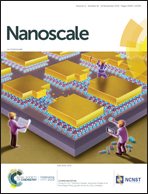Arc-discharge synthesis of nitrogen-doped C embedded TiCN nanocubes with tunable dielectric/magnetic properties for electromagnetic absorbing applications†
Abstract
The development of novel composites consisting of ceramic and C materials to alleviate increasingly serious electromagnetic radiation is of great significance in the microwave absorption (MA) field, considering their superior anti-oxidation/corrosion performances and good mechanical strength as well as adjustable dielectric loss capabilities. However, it is still a great challenge to broaden their effective absorption bandwidth (reflection loss value ≤ −10 dB) and strengthen the absorption intensity simultaneously, which is mostly attributed to the unreliable impedance matching degree at the absorber/air interface. Herein, a feasible strategy is adopted to synthesize TiCN@N-doped C nanocubes, whose low graphitization degree provides desirable impedance matching conditions. In the meantime, masses of core/shell hetero interfaces ensure strong microwave absorption capability. Experimental results reveal that the optimal effective absorption bandwidth of the prepared TiCN@N-doped C nanocubes can reach up to 5.44 GHz with a thickness of 1.88 mm. Our work demonstrates that the TiCN@N-doped C nanocubes have potential for electromagnetic absorbing applications.



 Please wait while we load your content...
Please wait while we load your content...